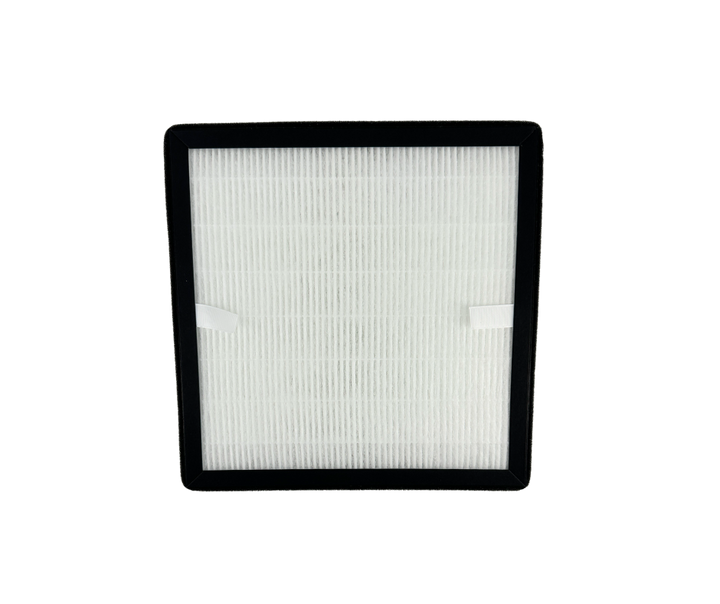Where laser cutters are used, laser extraction can protect the health of machine operators. During the laser process, the suction removes all vapors and the smallest released particles from the work area . As a rule, this is passed on to a filter system that cleans the exhaust air.
Lasers are currently being used in more and more areas, for example when creating stamps, in medicine or in the automotive industry. This article informs you about the benefits of laser suction , the dangers and challenges without suction and some of the different areas of application.
That's why laser suction is necessary

When materials are processed using a laser,, a reaction to the laser radiation occurs. In most cases, evaporation occurs on the surface of the material, causing smoke to form and particles to flow into the room. Most of these particles have a diameter of less than one micrometer. However, in combination with the vapours, they build up in the room and, in the worst case, can damage the mechanics and the laser optics. In addition, minimizing the formation of dust and particles reduces the likelihood that the machines will fail. This means that both the laser and the work material are protected, and you can improve your engraving or cutting results thanks to the extraction of the laser.
The second valid reason is the health impairment of people in the work area. Because of their tiny size, the particles are able to penetrate the alveoli of the lungs and thus damage the vital respiratory organ. Laser suction cleans the air, protecting human lungs from dangerous foreign substances. Another plus point for the user: the material-specific odours are also filtered out of the air.
Dangers and challenges without suction
Companies may ask themselves the question: Is occupational safety through laser suction even necessary? The answer is obvious: without appropriate protective measures, smoke, fumes and particles would spread throughout the production hall and poison the air for all employees. Therefore, it would not only be a challenge but also a serious danger to forego adequate air pollution control technology.
If small workpieces are produced in your company, a permanently installed extraction hood is probably sufficient. If, for example, comparatively low emissions occur during laser welding, many companies do not use laser extraction at all , but only room ventilation. Nevertheless, you should expect ultrafine particles in the air you breathe, which is why it is advisable to always install reliable extraction technology.
Functions and advantages of laser suction
Suction laser cleaning involves non-contact tools. Within seconds, they free the room air from smoke and smoke gases. During the laser process, they ensure constant, consistent filtering, which in current models is controlled using software. The extraction of the laser can then be switched on and off automatically in digital form. You also always have the option of checking the filter level. This way you will find out in good time when the filter should be replaced. With the Mr Beam laser cutter, you will be informed directly about the filter status in the software, although it is advisable to still carry out a visual check of the filters from time to time.
Laser cutters and engravers are often available in combination with the associated extraction systems, for example as a substructure or table extraction system. Depending on the manufacturer, there are also filters for coarser particles. Laser extraction systems are often equipped with an additional activated carbon filter.

Important to know: On the market you will discover different devices for suction combined with the laser. Finally, there are various types of production, from engraving to laser welding to 3D printing. The Mr Beam Air Filter System with external control is compatible with various devices such as 3D printers and other laser cutters. If you already have a Mr Beam with an air filter, and you would like to combine other devices with it, you only need the external control. The Mr Beam Air Filter System is also perfect as a mobile extraction system and can be used, for example, when soldering.
Application of laser suction: real case studies
Maybe you enjoy being creative and creating your own designs using a laser beam. Thanks to the development of laser technology, you are able to cut and engrave different materials , for example wood, fabrics, metal or leather. There are no limits to your imagination when choosing cuts and engravings. Numerous online shops in the print-on-demand sector rely on laser cutting and engraving to create unique items according to customer requirements.
Even if you only cut a small selection of products or decorate them with individual lettering, laser extraction is essential. During processing in the workshop, dust, gases, aerosols and other particles that are harmful to the respiratory system swirl up. Without laser suction, you run the risk of causing significant damage to your health through your creative activity and impairing the performance of the machines. An effective extraction and filter system in the work area cleans the air so that you can work with the laser for hours.
You should also think about laser extraction when working with 3D printers. Selective Laser Sintering (SLS) or Selective Laser Melting (SLM) is considered an all-rounder and particularly versatile. As part of this technique, two pools are used. In the output basin, a roller transports powder made of polyamide-12, metal or ceramic as well as plastic-coated moulding sand into the second basin. There, a laser sinters (SLS) or melts (SLM) the powder, which then hardens. This is followed by the application of a second layer of powder, which is also hardened by a laser beam. It is obvious that powder particles get into the air, especially in the first work step, and that all further vapours contaminate the air. It is therefore advisable to integrate a suction system on the 3D printer’s laser. The potential of such printers has enormous scope in industry, from automobile construction to house construction. For the benefit of the operators of such machines, ideally only with laser suction!
Laser suction is therefore essential

As you can easily see from these examples, the old saying "Where there is planing, there are chips falling" applies when cutting, cutting and engraving with laser. Chips in the form of smoke, steam and microscopic particles that settle in the lungs and can lead to respiratory diseases. Below, you can see all the advantages of laser suction at a glance:
- filters the air in the work area constantly and consistently
- Dissipates smoke and fumes produced during lasering
- protects the lungs during work
- protects the mechanics and laser optics from damage
- bad smells are minimized
- fewer machine failures and better work results
- Laser suction devices are available for different needs, e.g. with filter bags and in various sizes
- Nowadays, they are mostly digital and can be operated using software
Conclusion on laser suction
The advantages of constant laser extraction clearly outweigh the disadvantages. Where the smallest fine dust particles move in the air, simple room ventilation is no longer sufficient. For the safety of all users and to protect the machines, it is then necessary to invest in professional laser extraction. It doesn’t matter whether the lasering takes place in the living room or the workshop. Laser suction is often dispensed with, especially with “China lasers”. We can only advise against this and point out responsible use with an air filter.
Would you like to find out more about this? We have published a detailed video about laser suction on our YouTube channel.





